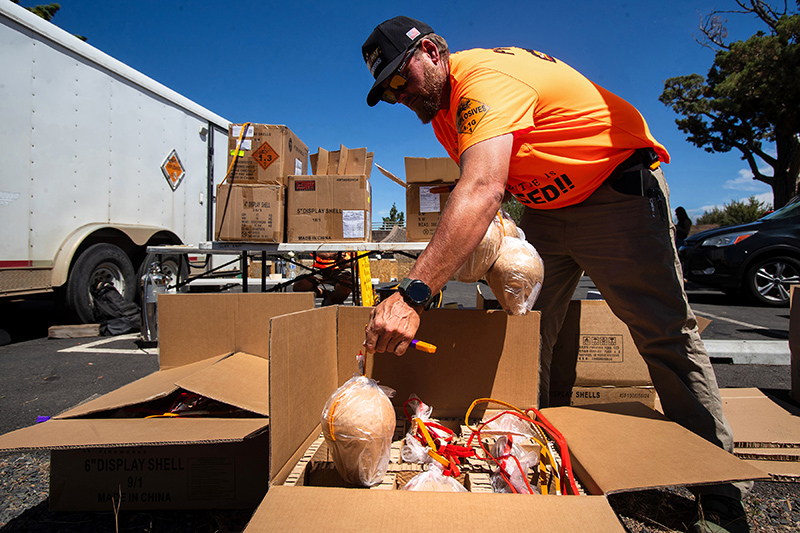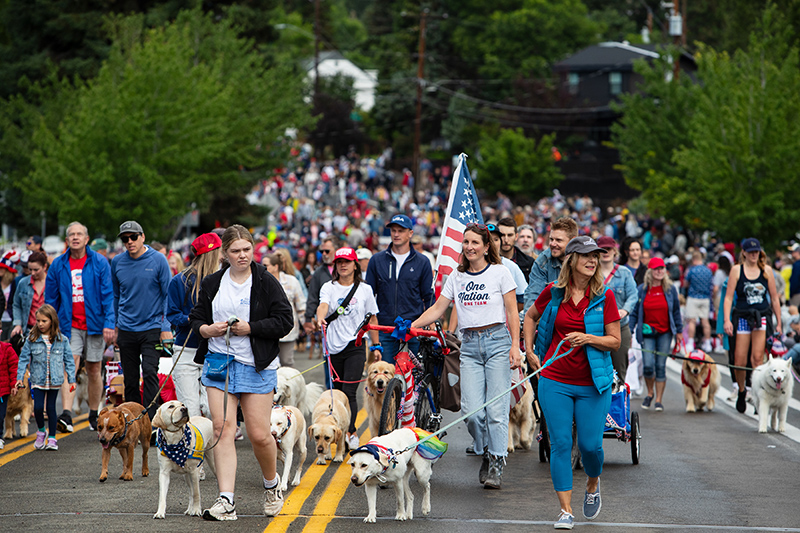Feds offer first measure of outdoor economy: $373.7B
Published 12:00 am Thursday, February 15, 2018

- RVs are parked outside the Big Country RV dealership in Bend on Wednesday. Motorized vehicles, including RVs, is the largest category of economic activity related to the outdoors.(Joe Kline/Bulletin photo)
For the first time, the federal government and private industry have a picture of the outdoor industry’s contribution to the national economy, and it has been growing quickly.
The Bureau of Economic Analysis announced Wednesday that outdoor recreation accounted for $373.7 billion of gross domestic product in 2016, and that it grew 3.8 percent, compared with 2.8-percent growth in the overall economy.
Outdoor recreation was already counted in the GDP, but its many components are hidden in various industries. Recreational vehicle sales, for example, were counted along with other motor vehicle sales, and RV manufacturing was with other transportation equipment. The BEA’s new outdoor recreation satellite account pulls figures from throughout the economy, similar to the way travel and tourism is measured.
And RV use is a big source of economic activity, the BEA found. Activity around motorized vehicles was the single-largest category, accounting for $59.4 billion of gross output in 2016. RVs accounted for more than half that value at $30 billion.
“We’re on par with golf, just nobody knows we’re here,” said Bradley Waring, executive director of the Oregon RV Alliance in Junction City. There are 175 RV campgrounds in Oregon, he said. Winnebago is producing high-end models in Junction City, the company’s first manufacturing plant outside of Iowa, he said. Places like the Deschutes County Expo RV Park host rallies that draw hundreds of people.
The RV’s role in the outdoor economy is striking given the way the industry collapsed during the Great Recession, Waring said. Big Country RV, a dealership with locations in Redmond and Bend, has been steadily growing sales since 2009, general manager John Younger said. The Bend store saw record sales in 2016 and sold even more brand-new RVs last year, he said.
Big Country occupies a sprawling lot on N. U.S. Highway 97 and, even in winter, sees plenty of foot traffic to the showroom, which features a motor coach with a sticker price of more than $87,000. “We’re not preparing for a slowdown yet,” Younger said.
Waring said the data release is the culmination of a multiyear lobbying effort by the RV, boating and other recreational groups for recognition as a stand-alone industry. “These studies and these outputs are how the government measures where to spend their dollars,” he said.
Behind motorized vehicles, boating and fishing contributed $38.2 billion. Hunting, shooting and trapping contributed $15.4 billion, and equestrian activities contributed $12.7 billion.
Multiuse gear — coolers, bug spray, water bottles — is its own category worth $86.6 billion. The category grew 7.2 percent in 2016 and accounted for 35 percent of gross output in conventional outdoor recreation, the BEA said.
The growth in gear and apparel was not surprising to Central Oregon Regional Economist Damon Runberg, who said he’d urged the BEA to count gear companies in its calculation. Central Oregon is home to more than 70 recreational equipment companies, according to the Economic Development for Central Oregon. Many are micro businesses, but the category also includes Hydro Flask and Ruff Wear, both of which have international distribution and are in the process of expanding their Bend headquarters.
At the national level, outdoor recreation accounted for 2 percent of GDP in 2016, close to the 2.2 percent contributed by food services and drinking places, which includes all restaurants and bars, BEA spokesman Thomas Dail said. Runberg said he hopes there’s enough data to afford a look at outdoor recreation on the state or metropolitan level in the future.
“That number would probably be higher locally,” Runberg said. “Not even probably. It is higher, just knowing our industry composition compared to the national average.”
The data that was released Wednesday was a prototype, and the BEA could revise its methodology before releasing final statistics this fall.
— Reporter: 541-617-7860 kmclaughlin@bendbulletin.com








